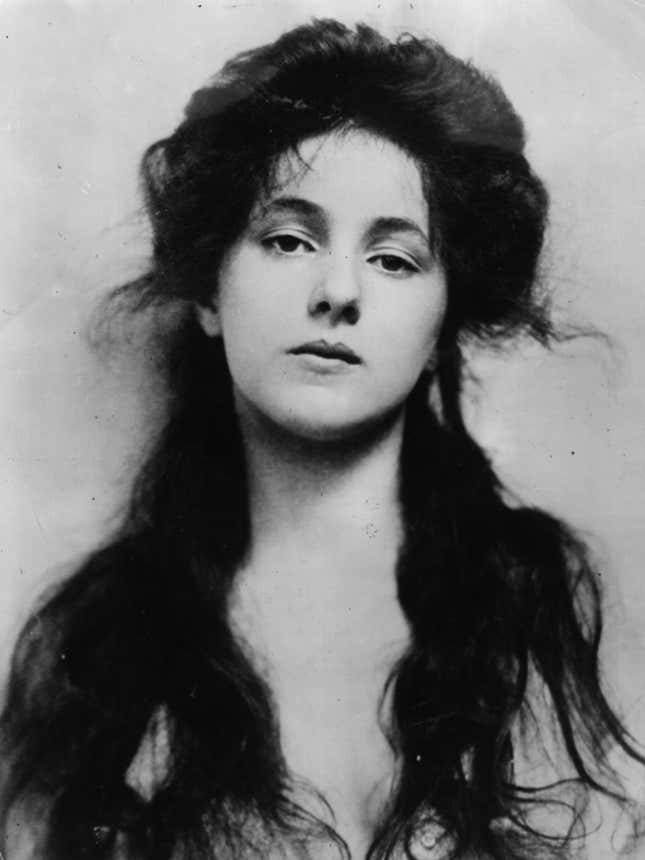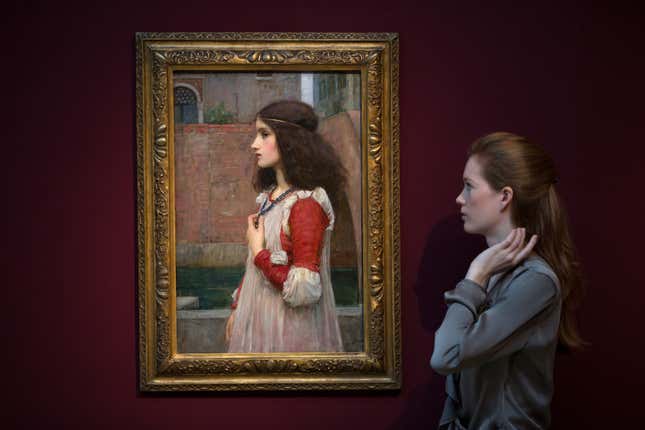The In-Between History of the Half-Up Hairdo
In Depth
Illustration: Chelsea Beck
Evelyn Nesbit was scarcely a woman when she posed for Rudolf Eickemeyer Jr. for the first time. She was 16, maybe, or 17—the year of her birth is uncertain, and Evelyn didn’t know herself when she actually came of age. She had been modeling for years by that point anyway. She’d seen more of the world, and more of men, than most girls.
But she wasn’t really an adult woman, and that’s important because one of Eickemeyer’s photographs of Evelyn would go on to inspire an iconic artwork by Charles Dana Gibson, the creator of the world-famous Gibson Girl, titled “Woman: The Eternal Question.” In the photograph, Evelyn poses in profile, holding a white rose, her long eyelashes cast shadows on her cheeks, her face calm, her body swathed in heavy fabric, her hair loose yet pinned, up and down. In Gibson’s drawing, he tilted her chin up, removed her body, removed the flower, and left only her face and hair. The dark cascade of curls forms the shape of a question mark, a girl turned into a woman turned into a piece of punctuation.

I love the first picture, like I love all of Eickemeyer’s photographs of Evelyn (or at least, all the ones I’ve seen). She was the original “It Girl,” lovely and lively, strong-minded and controversial. She was a model for artists and fashion designers, as well as a chorus girl, an actress, and much later, an art teacher. She lived most of her life on the edge of respectability—the men who paid for her image were respectable, as were the women who bought products featuring her likeness, but no matter how rich she married, she could never quite ascend into high society. Her story is a sad one, tainted with blood, tears, morphine, and murder; she’d become most famous as the woman stuck in the center of the sensational trial that ensued when her unstable husband shot and killed Gilded Age architect Stanford White, and Evelyn testified she’d been in a years-long relationship with White, which began when he drugged and assaulted the young model. In the early years of the 20th century, her expressive face was absolutely everywhere. I almost always love to see it, but I hate the Gibson picture. In that simple drawing, Evelyn is nothing but a question. Nothing but a bit of hair.
It’s her hair that does it, that turns her into a symbol, a mark on a page. Gibson’s women were all drawn like this—with big hair and simple features. Often, their hair was up in a chignon with just a few curls escaping. He drew his girls riding bicycles, playing croquet, and examining men under a magnifying glass. These women were big-haired and fine-featured, healthy and elegant. They were meant as a rebuke to the suffragettes, to all those women who wanted to be seen not as girls, but as humans.
Gibson was known for his fluffy-maned girls and Evelyn would come to be known for her pin-up portraits. In drawing the model this way, Gibson captured a bit of the zeitgeist. He also captured another question, one rendered in hair. When does a girl become a woman? When does an individual become an icon, an object?
-

-

-

-

-

-

-

-

-

-

-

-

-

-

-

-

-

-

-

-

-

-

-

-

-

-

-

-

-

-

-

-

-

-

-

-

-

-

-

-











































